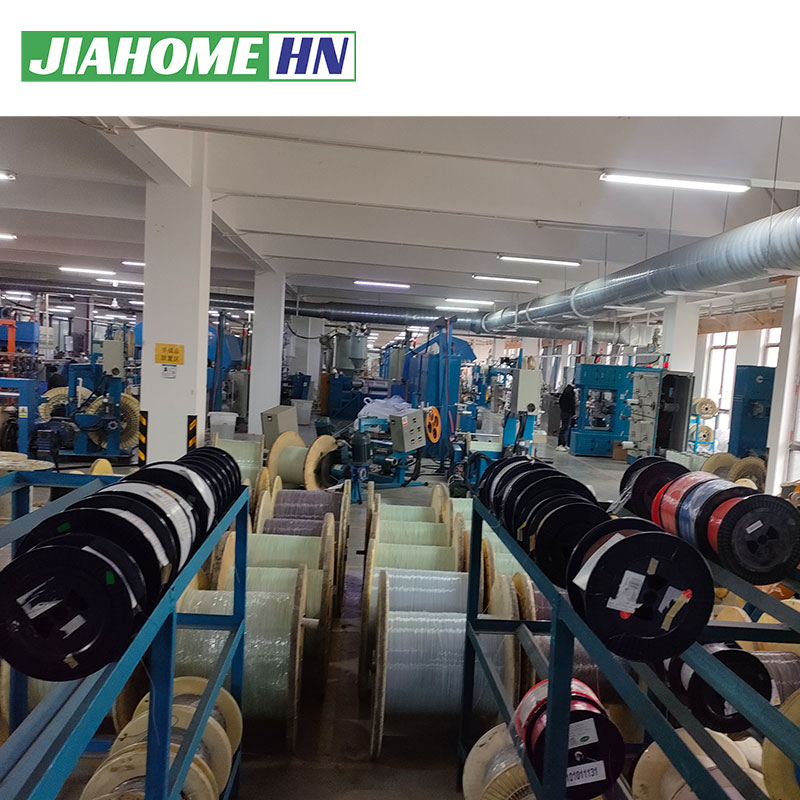1.The Difference Between Multimode Fiber Om2 Om3 Om4 And Om5

Multimode optical fiber is commonly used in networking and data transmission for shorter distances. The OM2, OM3, OM4, and OM5 designations refer to different specifications for multimode optical fibers, indicating their capabilities and performance characteristics.
- Modal Bandwidth: OM2 fiber has a lower modal bandwidth compared to OM3, OM4, and OM5 fibers. This limits its ability to support higher data rates and longer distances.
- Performance: OM2 is optimized for lower-speed applications and shorter distances. It is generally not as suitable for high-speed data center applications as OM3, OM4, and OM5 fibers.
- Wavelengths: OM2 fiber is optimized for use with 850 nm wavelengths, similar to other multimode fibers. This limits its compatibility with certain advanced wavelength multiplexing technologies like SWDM.
Core Diameter: 50 μm (micrometers)
Modal Bandwidth: 2000 MHz·km
Maximum Reach: Around 300 meters for 10 Gbps Ethernet
Wavelengths: Optimized for 850 nm (nanometers)
Commonly used for 10 Gbps and 40 Gbps Ethernet applications.
Suitable for data centers, local area networks (LANs), and other short-range applications.
Core Diameter: 50 μm
Modal Bandwidth: 4700 MHz·km
Maximum Reach: Around 400 meters for 10 Gbps Ethernet
Wavelengths: Optimized for 850 nm
Provides higher bandwidth compared to OM3, allowing for longer distances at the same data rates.
Often used in high-speed data center applications and for 40 Gbps and 100 Gbps Ethernet.
4.OM5 (Optical Multimode 5):
Core Diameter: 50 μm
Modal Bandwidth: Similar to OM4 (around 4700 MHz·km)
Maximum Reach: Around 100 meters for 100 Gbps Ethernet (Short Wavelength Division Multiplexing, SWDM)
Wavelengths: Optimized for 850 nm and can also support wavelength multiplexing for longer reach.
OM5 introduces the concept of “wideband” multimode fiber, which can support multiple wavelengths for higher data rates or extended distances.
Primarily designed to support SWDM technology, which allows multiple wavelengths to be used over a single fiber for higher data rates without requiring new fiber installations.
So, the main differences between OM2, OM3, OM4, and OM5 multimode fibers lie in their modal bandwidth, reach, and their suitability for different data rates and applications. OM4 offers better performance compared to OM3, and OM5 introduces the concept of wideband multimode fiber to support advanced technologies like SWDM for even higher data rates and extended distances. The choice between these types of fiber depends on the specific requirements of the networking or data transmission application.
2.The Advantages Of Multimode Fiber Om2, Om3 Om4 And Om5
Multimode optical fibers, including OM2, OM3, OM4, and OM5, offer advantages for various networking and data transmission applications. Here are the advantages of each type:
OM2 (Optical Multimode 2):
- Cost: OM2 fiber may be more cost-effective compared to newer fibers like OM3, OM4, and OM5. This can make it a viable choice for specific budget-constrained installations.
- Compatibility: OM2 fiber can still be useful in networks where lower data rates are sufficient. It can be compatible with older network equipment and standards.
- Short Distances: OM2 fiber can support shorter distances at lower data rates, making it suitable for certain LAN and campus network applications.
- Backward Compatibility: Like other multimode fibers, OM2 is backward compatible with previous Ethernet standards and can be used in mixed-speed networks.
OM3 (Optical Multimode 3):
- Cost-Effective for Short Distances: OM3 fiber is suitable for short-distance applications within data centers and local area networks (LANs). It offers a balance between performance and cost, making it a cost-effective choice for these environments.
- Backward Compatibility: OM3 can support lower-speed applications as well, making it backward compatible with existing Ethernet standards.
- Support for 10 Gbps Ethernet: OM3 fiber can reliably transmit data at 10 Gbps over short distances, making it suitable for upgrading networks to higher speeds without extensive infrastructure changes.
OM4 (Optical Multimode 4):
- Higher Bandwidth: OM4 fiber provides higher modal bandwidth compared to OM3, allowing for better performance at longer distances and higher data rates.
- Extended Reach: With its increased bandwidth, OM4 can support longer distances at the same data rates as OM3. This is particularly important in data center and high-speed networking applications.
- High-Speed Data Center Connectivity: OM4 is commonly used in data centers to support 40 Gbps and 100 Gbps Ethernet connections over short to moderate distances.
OM5 (Optical Multimode 5):
- SWDM Support: OM5 introduces the concept of wideband multimode fiber, which is optimized for Short Wavelength Division Multiplexing (SWDM). SWDM technology allows for the transmission of multiple wavelengths (colors of light) over a single fiber strand, enabling higher data rates.
- Higher Data Rates: OM5, when used with SWDM technology, can support data rates of 100 Gbps and beyond over short distances, which is essential for bandwidth-intensive applications.
- Future-Proofing: The ability to use SWDM technology means that OM5 can accommodate future upgrades to even higher data rates without requiring major changes to the fiber infrastructure.
- Flexibility: OM5 can be used for both traditional applications (like OM3 and OM4) as well as advanced SWDM-based applications, providing flexibility in network design.
All in all, while OM2 fiber has its advantages in terms of cost and compatibility with older equipment, it is less suited for modern high-speed networking applications compared to the more advanced OM3, OM4, and OM5 fibers. As technology continues to advance and the demand for higher data rates and longer distances increases, OM2 fiber is gradually being replaced by these newer multimode fiber types. The advantages of OM3, OM4, and OM5 multimode fibers stem from their suitability for different distances, data rates, and technologies. OM3 offers cost-effective solutions for short distances, OM4 provides higher performance and reach, while OM5 with its SWDM support brings future-proofing and higher data rates to short-range connections. The choice of which type to use depends on the specific requirements of the network and the applications it will support.
Post time: Aug-24-2023

